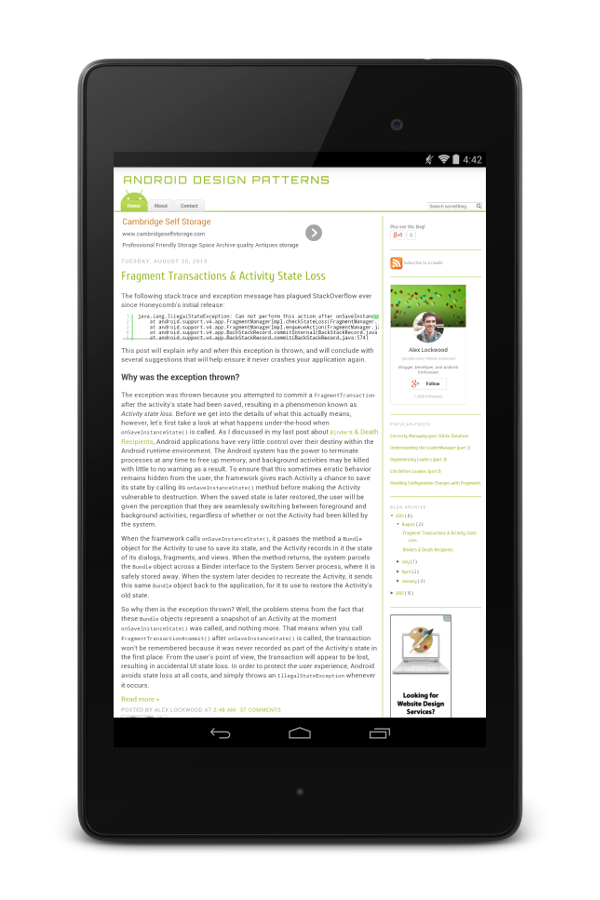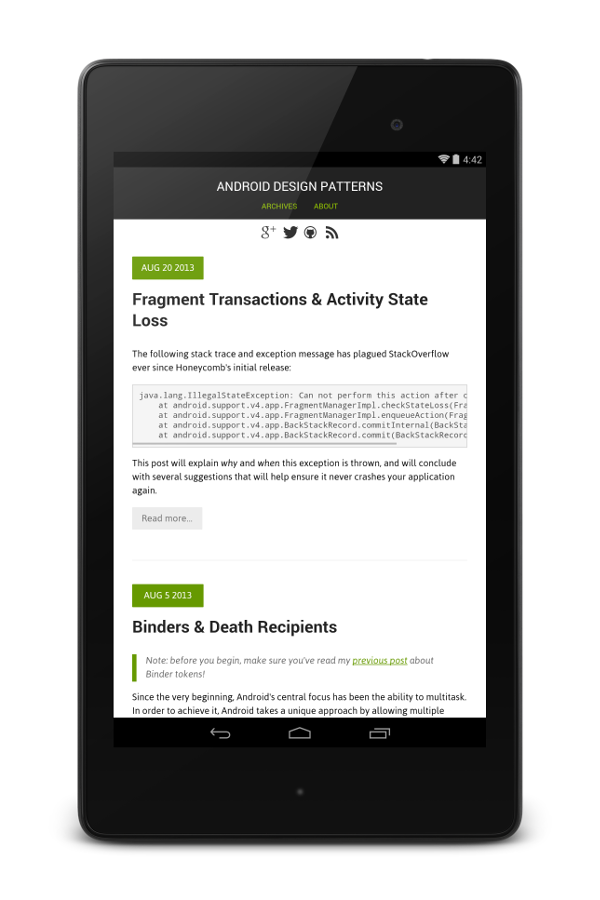Redesigning Android Design Patterns
A couple weeks ago, I began the ambitious task of rewriting this blog from scratch. Today, I’m happy to introduce a brand new look: one that is cleaner, faster, and more responsive.
Several of the major changes are listed below. If this is your first time visiting this blog, you can find the old version of the site here to use as a reference.
-
Goodbye Blogger, hello Jekyll. I’ve never been a huge fan of Blogger and was eager to try something new. After a bit of research I decided to give Jekyll a shot. Unlike Blogger, which dynamically parses content and templates on each request, Jekyll generates the entire website once beforehand to serve statically and is much more efficient as a result. It’s a bit under-documented and I’m not a huge fan of Liquid (the templating language Jekyll uses to process templates), but other than that I have no complaints. I’d take Jekyll over Blogger any day.
-
100% open-source. The source code powering this blog can be found on GitHub, and may be used by others as the basis of their own blogging templates under the MIT license (with the exception of the contents of the actual posts, of course :P). Given that Android Design Patterns wouldn’t even exist without Android—one of the largest open-source projects in the world—making this blog 100% open-source seemed fitting. Another cool implication of an entirely open-source blog is that readers can propose corrections themselves by submitting pull requests to GitHub.
-
Faster page load times. Check out the old version of this blog and see for yourself! Page Speed reports an increase from 65/100 to 89/100 for mobile devices and 86/100 to 95/100 for desktop computers.
-
Clean, responsive, and mobile-friendly. First of all, I’d like to thank +Shannon Lee for coming up with most of the new design. I consider myself a beginner at web design, so this couldn’t have been done without her! That said, I definitely recommend checking out the site on your phone or tablet, as it’s one of my favorite aspects of the new design. Below is a comparison of the old vs. new versions of the site on a Nexus 7:
-
Disqus comments. Picking a third-party commenting platform to use was difficult, as there weren’t many options to choose from. I ended up choosing Disqus, as it was one of the few commenting systems that I could find that would correctly and reliably import my old comments from Blogger (spam detection is also a plus). One of the consequences of the migration, however, is that all old threaded comments are now unthreaded, meaning that most of the old comments are a bit of a mess right now. I plan on manually cleaning up these at some point in the future. Going forward, all new comments will thread normally.
Let me know what you think of the new design in the comments below! Make sure to also leave any suggestions, criticisms, or feature requests too. The design will continue to be refined over time until it’s perfect. :)


